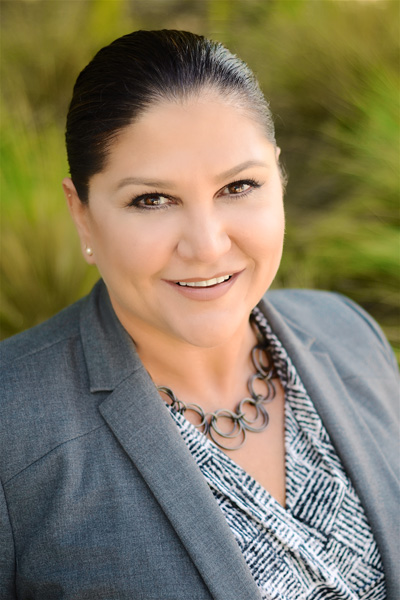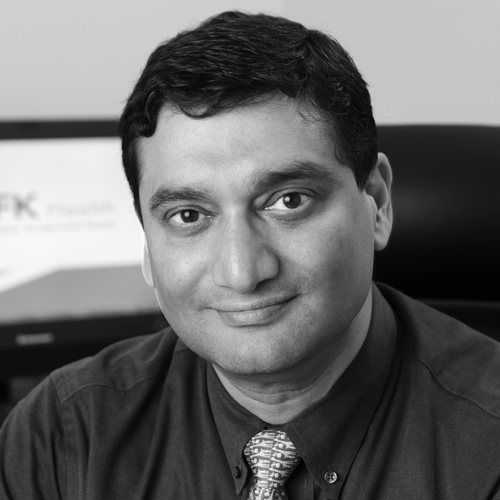Joline Treanor isn’t afraid to put the greater good above her own ambition. And that’s exactly what she did at St. Joseph Health, essentially eliminating her own position at the company in the process by helping with the company’s merger. And she’s OK with that.
Treanor, former senior vice president, chief human resources officer at Irvine, California’s St. Joseph Health System, was instrumental in the integration and strategy work that brought the organization together with Providence Health & Services to become what is now known as Providence St. Joseph Health. Mergers and integrations often create position redundancies that impact some people during the company’s transition. In the case of the St. Joseph’s merger, Treanor ended up being one of the people who would be impacted.
“As the organizations were coming together, I knew early on that there would be a need to look at all available synergies; it’s the right and prudent thing to do,” she says. “You can’t have two CHROs, and my Providence counterpart is an accomplished, brilliant woman, sure to do great things. I leave encouraged about their future and with great relationships with colleagues and friends.”
This merger is just one example of the changing landscape in healthcare. Convergences are occurring throughout the market. “It is a turbulent time in healthcare, and certainly one of change, ambiguity, and uncertainty,” she says.

Indeed, change and uncertainty are what Treanor loves most, which partially explains why she entered the healthcare space in 2014. Originally from Colorado, Treanor earned her BS in industrial organization psychology and her MA in education technology at San Diego State University. Her professional experience has included positions with Digital Equipment Corporation, Compaq Computer Corporation, and Apple. She then worked at Deloitte Consulting for
fourteen years, where she served as an advisor to clients across a range of industries covering subject areas such as business strategy, operations, technology adoption, and human resource strategy, design, and transformation.
While working at Deloitte, Treanor worked with St. Joseph Health on its HR transformation initiative. Needing a full-scale transformation, she revised policies, processes, and organizational structure in preparation for the implementation of new HR technology. “It was an antiquated system,” she says. “We were structuring HR to be more cost-effective and more aligned with the employee experience.” In this advisory role, she realized she wanted to work for St. Joseph because of its mission to help underserved populations, she says. “The sole reason they exist is to serve their communities and address the needs of the poor and vulnerable,” she says.
Less than a year after she joined the organization full-time, Treanor was asked to bring the St. Joseph Health System and Providence Health & Services systems together. Because both were Catholic organizations, the partnership seemed like an easy choice, she says. “There was an alignment in values that brought those two naturally together,” she explains. In addition, there was no market overlap. “It was a natural marriage of two organizations with shared values for serving the community at large,” she says.
While working on the merger, Treanor had to balance the needs of the organization with the uncertainty of the modern healthcare landscape. “It was about aligning strategy and understanding the needs of healthcare today,” she says. “It was about how to provide the services the community expects and deserves while successfully dealing with the political ambiguity and uncertainty—including Medicare, population health, changing reimbursements, and
consumer-driven healthcare,” she says.
“Twenty-three million uninsured Americans shifts the problem to the health systems, the safety net hospitals, and clinics. Someone has to care for these people.”
From Treanor’s perspective, mergers cannot just be effective in theory: they have to work in the real world and offer substantial benefits to those they serve. She is especially proud, therefore, that on the day the merger was announced, the newly formed system launched its Institute for Mental Health and Wellness and pledged one hundred million dollars to establish a foundation to support initiatives that drive collaboration and learning across the seven states it serves. “This was a differentiating factor,” she says. “Mental illness is the silent disease that everybody in some way or form has some kind of experience with. In coming together, the new organization made a pledge to become a mental healthcare leader and made a commitment of service. The combination was not just good on paper, it was bringing together the best of the two organizations to not only meet the needs of the community but also to meet its commitment of caring for the vulnerable in a fiscally responsible way.”
With the combination complete, Treanor is now taking a few months off as she contemplates her next move. “It was a difficult decision to leave,” she says. “While I was offered another position in the organization, I felt it best to pursue another role that was better aligned with my passion.” As she ponders her future, she will indulge another abiding passion. “I am obsessed with international travel,” she says. She’s already visited Cuba, Peru, and most of Europe, among other locales, and would like to add Vietnam to her passport stamp collection.
Treanor won’t be abroad forever, though; her concerns about recent changes in healthcare and the potential loss of access for millions of Americans will almost certainly bring her back. “Twenty-three million uninsured Americans shifts the problem to the health systems, the safety net hospitals, and clinics,” she says. “Someone has to care for these people, the poor and vulnerable, and organizations are faced with finding a way to do it that is financially prudent, particularly when you are not for profit.” Treanor is looking forward to attacking the challenge: “Complexity and ambiguity are what I love.”
